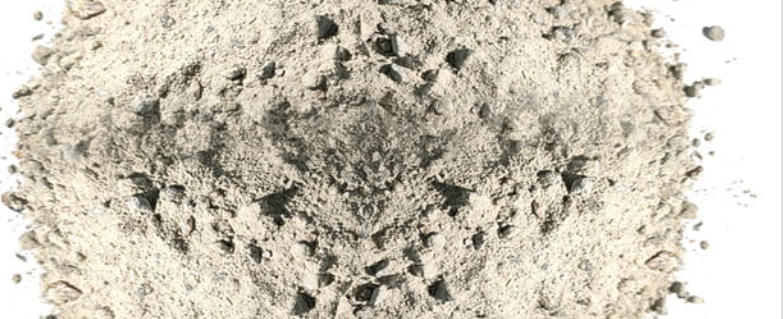kol . 22, 2025 19:24 Povratak na popis
Refractory lining material selection criteria
Refractory lining material selection criteria involve nuanced considerations beyond basic temperature resistance, encompassing factors like thermal shock resilience, chemical compatibility with process fluids, and long-term dimensional stability—elements critical for specialized industrial applications. Non-toxic, simple construction, high efficiency, reducing labor intensity. Long continuous casting time(over 35 hours), erosion resistance, easy decoating (flipping), cost reducing. These attributes are often overlooked in standard guidelines but are pivotal for optimizing equipment lifespan and operational efficiency. Refractory lining material, kiln refractory material, and castable refractory material each have distinct properties that make them suitable for specific scenarios, from high-pressure boilers to waste incinerators. Xingtai Luxi Environmental Protection Technology Co., Ltd., with its expertise in refractory engineering, has developed selection frameworks that address these factors, ensuring materials meet the unique demands of diverse industrial processes.
Thermal Cycling Resistance in Refractory Lining Material
- Rapid Temperature Fluctuation Tolerance: Refractory lining materialused in glass kilns must withstand 500°C temperature swings within hours. Xingtai Luxi’s alumina-silica composites, with controlled porosity (15–20%), exhibit 90% less spalling than dense refractories after 1,000 thermal cycles, reducing downtime for relining.
- Heat Storage Capacity Matching: In regenerative kilns, refractory lining materialmust store and release heat efficiently. The company’s magnesia-chrome variants (with 3.2 g/cm³ bulk density) optimize heat transfer, improving fuel efficiency by 8% in cement production facilities.
- Thermal Conductivity Gradation: Multi-layer refractory lining materialsystems, where inner layers have low conductivity (0.8 W/m·K) and outer layers high (2.5 W/m·K), prevent heat loss while protecting structural steel. This gradation, pioneered by Xingtai Luxi, is critical for rotary kilns processing hazardous waste.
Chemical Inertness in Kiln Refractory Material
- Molten Slag Compatibility: Kiln refractory materialin iron smelters must resist calcium-aluminate slag penetration. Xingtai Luxi’s zirconia-enhanced materials form a protective glassy layer at slag-refractory interfaces, reducing wear by 40% compared to standard alumina refractories.
- Acid Gas Resistance: In waste incinerators, hydrochloric and sulfuric acid gases corrode conventional refractories. Their kiln refractory materialwith 5% silicon carbide forms a dense oxide layer, maintaining integrity in environments with pH levels as low as 2, common in medical waste facilities.
- Metal Vapor Barrier Properties: Aluminum and zinc vapors in foundries penetrate porous refractories, causing structural weakening. Kiln refractory materialtreated with boron nitride (BN) by Xingtai Luxi blocks vapor diffusion, extending lining life in die-casting operations by 18 months.
Mechanical Stress Tolerance in Castable Refractory Material
- Casting Pressure Resistance: Castable refractory materialused in high-pressure boilers must withstand 10 MPa operating pressure without cracking. The company’s calcium aluminate-bonded castables, reinforced with steel fibers (0.5% by weight), exhibit flexural strength of 8 MPa at 1,000°C, preventing pressure-induced failures.
- Shrinkage Compensation: During curing, castable refractory materialtypically shrinks 1–3%, creating gaps. Xingtai Luxi’s expansive castables (with 0.5% aluminum powder) offset this shrinkage, ensuring tight seals in furnace door frames and reducing heat loss by 12%.
- Abrasion Resistance in Dynamic Flow: In cyclone separators, refractory linings endure particle impact at 20 m/s. Their castable refractory materialwith 30% chromium oxide achieves a wear rate of 0.1 mm/year, outperforming standard castables (0.5 mm/year) in coal-fired power plants.
Installation Efficiency in Refractory Lining Material
- Rapid Curing Formulations: Refractory lining materialfor emergency repairs must cure in <24 hours. Xingtai Luxi’s fast-setting castables, using ultra-fine alumina (D50=5μm), reach 70% strength in 8 hours, allowing quick return to service in steel mill tundishes.
- Low-Water Requirement Mixes: Castable refractory materialwith reduced water content (12–15%) minimizes porosity after firing. This lowers permeability by 30%, critical for preventing gas leakage in chemical reactor linings, as validated in petrochemical plant trials.
- Modular Design Compatibility: Kiln refractory materialprecast into modular shapes reduces on-site labor by 50%. The company’s interlocking magnesia blocks, designed for rotary kilns, feature tongue-and-groove joints that simplify installation while maintaining structural integrity.
|
Indeks |
raznolikost |
Kemijski sastav(%) |
|
Bulk density(g/cm³) |
Izdrži tlak(MPa) |
Promjene linija(%) |
|
|
|
|
|
MgO |
SiO₂ |
|
|
250 ℃ X 3h |
250 ℃ X 3h |
1500 ℃ X 3h |
|
|
Vibrirajući materijal od magnezija |
≥75 |
≤2.5 |
≥5.0 |
≥5.0 |
-0.2—0 |
|
|
|
|
Magnezij silikatni vibrirajući materijal |
≥60 |
≥20 |
≤2.5 |
≥5.0 |
-0.3—0 |
|
|
Refractory Lining Material FAQS
How to select refractory lining material for biomass-fired boilers?
For biomass boilers, refractory lining material must resist alkali corrosion from potassium salts. Xingtai Luxi recommends alumina-silica castables with 5% zirconia, which form a protective layer against alkali penetration, extending lining life by 2+ years.
What kiln refractory material works best for waste-to-energy plants?
Kiln refractory material with high chrome oxide (20%) and silicon carbide (10%) is ideal, as it resists acid gases and ash abrasion. The company’s waste incinerator linings using this mix achieve 4,000+ operating hours before maintenance.
Can castable refractory material be used in vacuum furnaces?
Yes, castable refractory material with low volatile content (<0.1%) is suitable. Xingtai Luxi’s vacuum-grade castables, fired at 1,600°C, prevent outgassing that could contaminate vacuum environments in aerospace heat-treating furnaces.
How does thermal shock resistance affect refractory lining material lifespan?
Poor thermal shock resistance causes 60% of refractory failures. Refractory lining material with controlled porosity (18–22%) from Xingtai Luxi withstands 500+ rapid temperature cycles, doubling lifespan in glass manufacturing kilns.
What is the cost-benefit of premium kiln refractory material?
While premium kiln refractory material costs 30% more upfront, it reduces relining frequency from 12 to 36 months, cutting total costs by 40% over 5 years. Xingtai Luxi’s life-cycle analysis tools help quantify these savings for clients.
-
Zonolite vermiculite historical uses in construction
VijestiAug.22,2025
-
Pink bauxite rarity and collector value
VijestiAug.22,2025
-
Heat refractory material thermal conductivity characteristics
VijestiAug.22,2025
-
Refractory lining material selection criteria
VijestiAug.22,2025
-
Therm O Rock vermiculite insulation properties
VijestiAug.22,2025
-
Bauxite AR in modern mining
VijestiAug.22,2025

